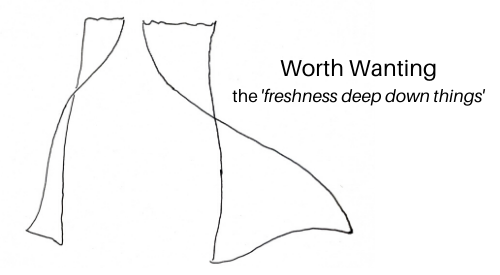Walking this last weekend in the Allandale Woods, a new-to-me urban forest near my home, I came across this:
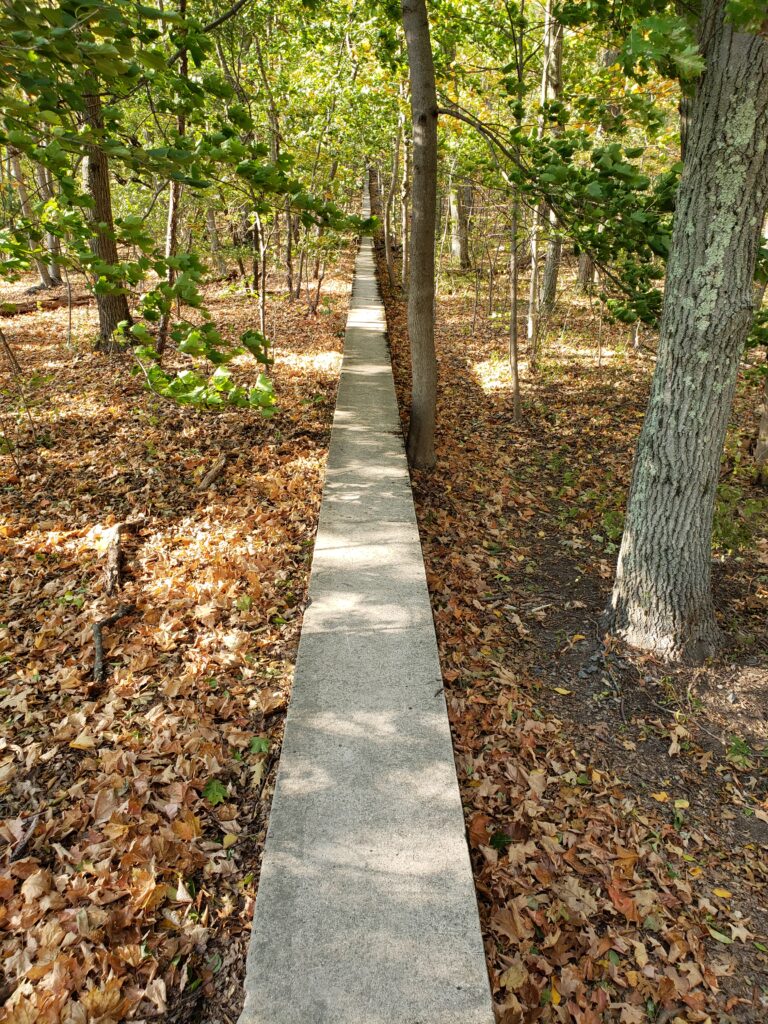
A low two and half foot high, foot and a half foot wide wall capped with cement, smooth enough to walk on, even ride a bicycle on. Climbing up I looked one way.
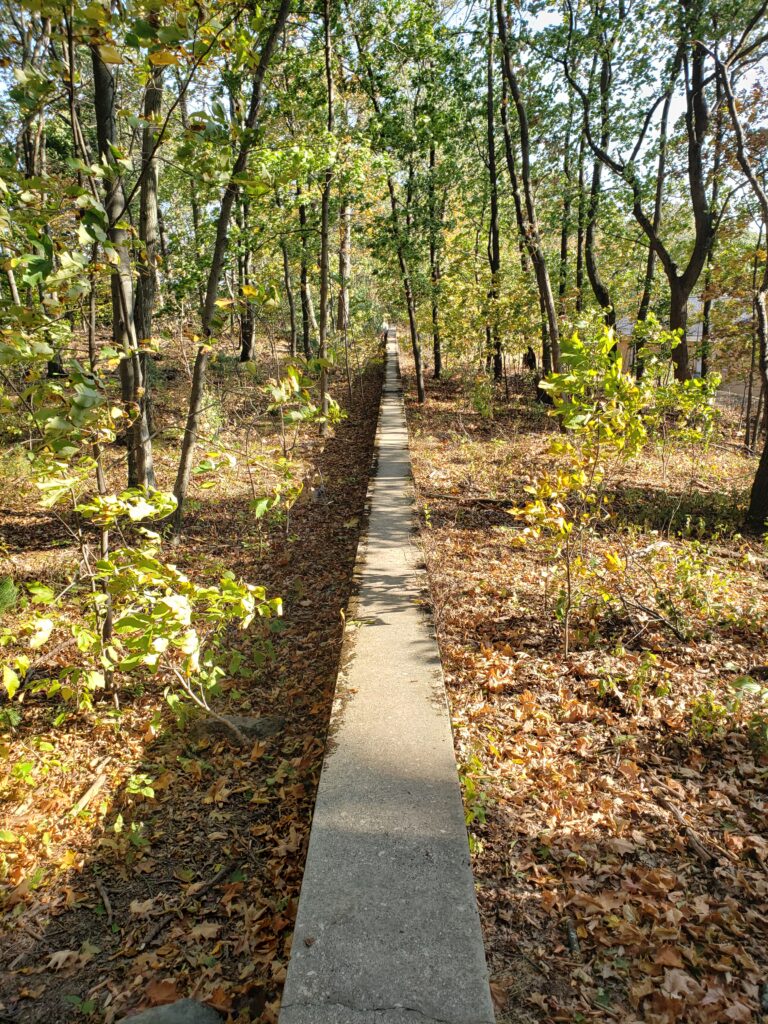
I looked the other way. the wall also extended out of sight in both directions.

I came across this structure again and again, going down into valleys and up the other side,

climbing over hills and puddingstone outcrops, arching streams.
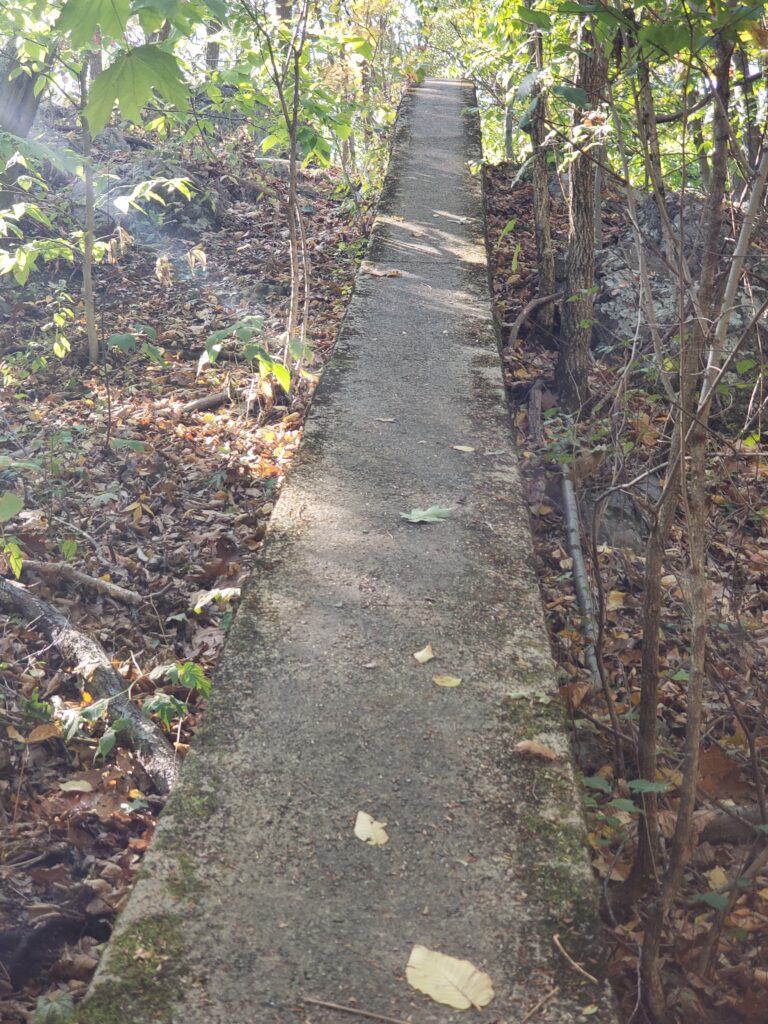
When I clambered on top and climbed, I had get on my hands and knees. (Watch out for poison ivy reaching up and and over.)

It was largely intact, with just a few holes knocked through to make way for trails.
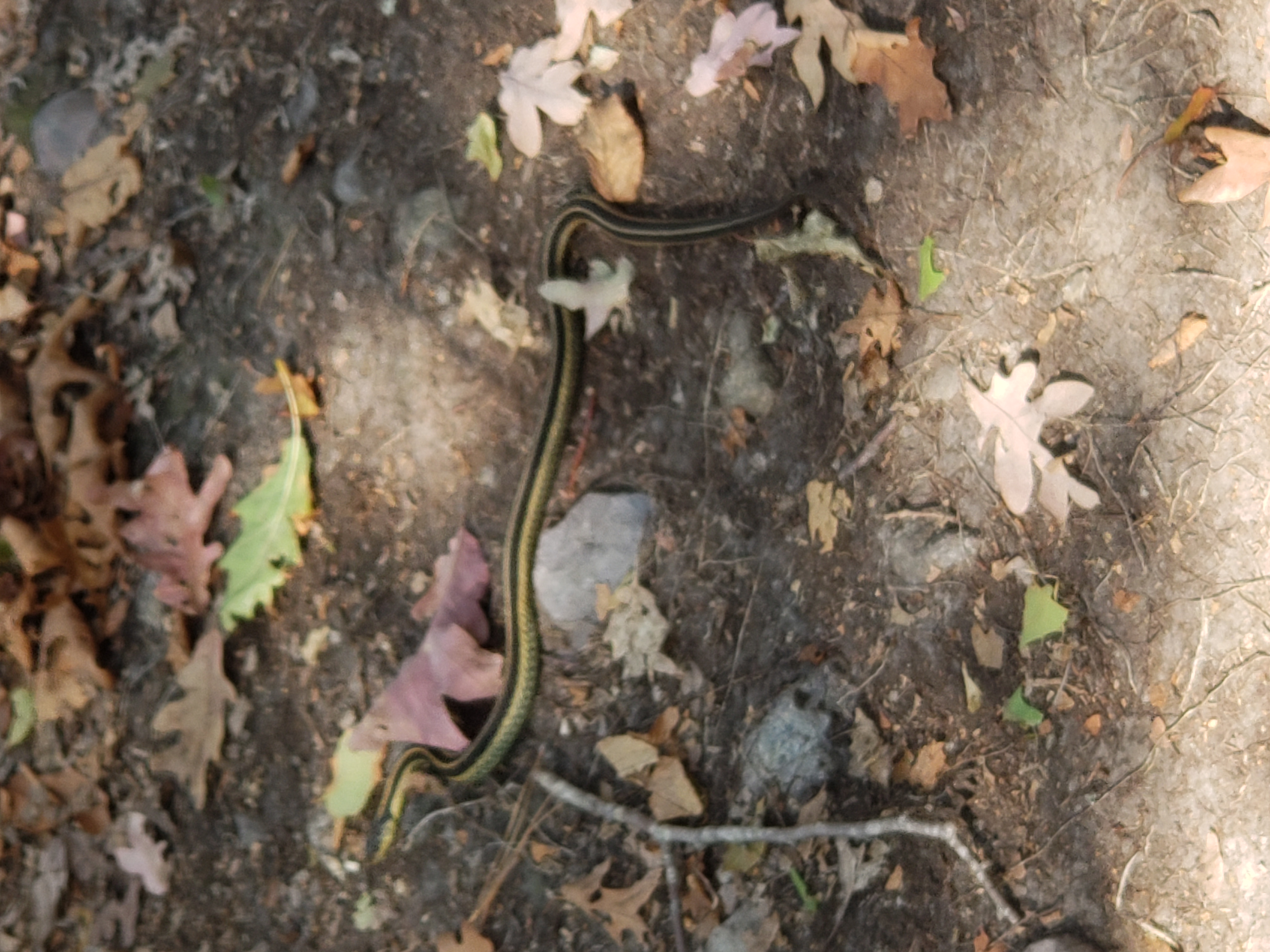
Just like the body of the snake I saw crossing my path, the wall curved left and right, and rose and fell. A moment later, the snake shot straight ahead, and sometimes the wall did that two.
At first I wondered whether this was one of the walls that are build around estates to keep the wandering eyes and feet of passersby out of the owner-privilege space. But it was an easy wall to climb and stand on, and what grew on one side was no different from what grew on the other.
Later I learned something of the history of the property from gift of farmland to a veteran of the Pequot War of 1637 through a landed estate phase to purchase by the city of Boston in 1896. Sometime during the thirties the wall was build, perhaps to serve as a boundary. There are no records related to when this mile-long structure was actually build or who did the actual work. The identity of the workers on the Allandale wall may be as lost as those who built the Great Wall of China.
New England’s woods are full of fieldstone walls, cellar holes, old livestock pounds and wells, all rough and ready structures, vulnerable to frost and pillage. The Allandale wall, by contrast, is like a starched collar for uprightness, yet not so stiff that there wasn’t once a walk-the-wall day for adults and kids.
I like to think of laughing children playing on the wall, but I also like to imagine the wall forging ahead, taut with intention, a strong and clear statement, if now only to itself.
